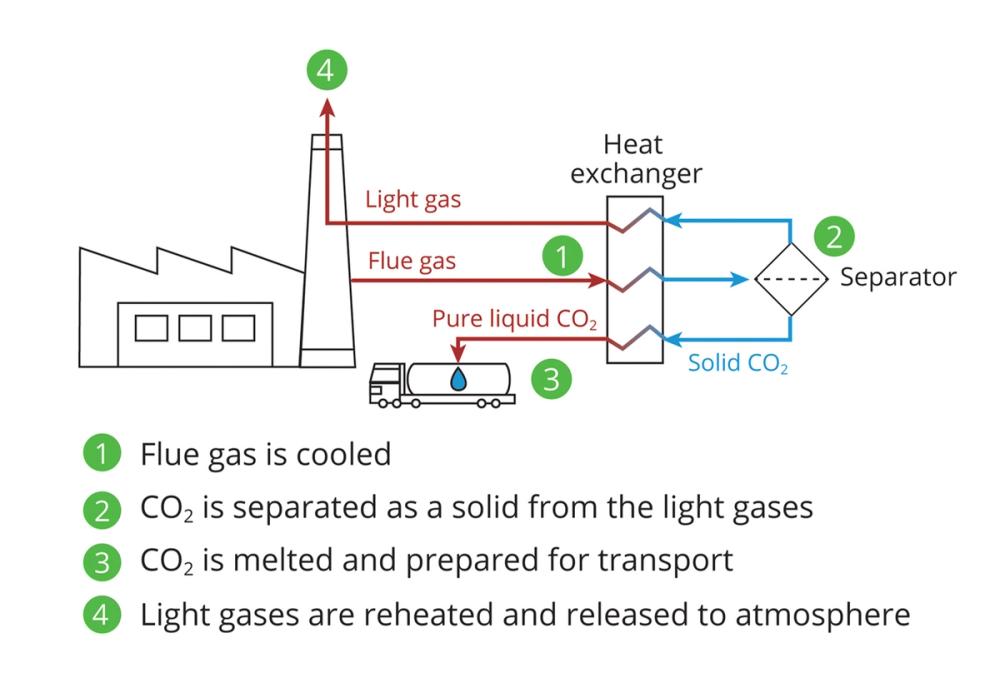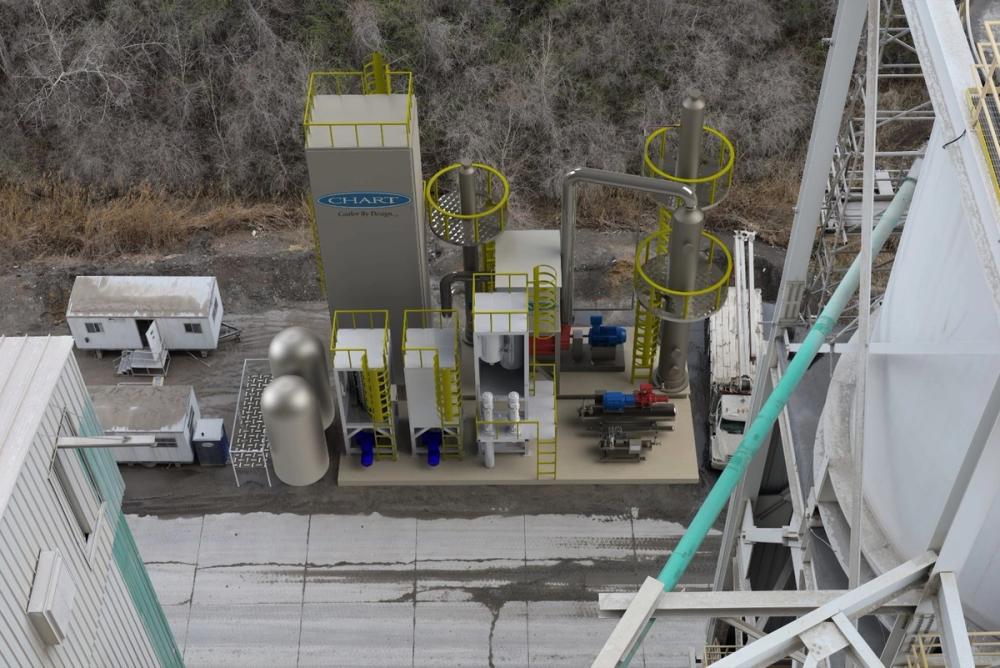article
Scaling up and cutting costs
A collaboration to identify cost-competitive pathways to reduce CO2 emissions in the cement industry. In September 2021, FLSmidth A/S entered into a MOU with Chart to advance carbon capture technology to significantly reduce CO2 emissions from cement production.
The agreement has seen the initiation of a pilot project at Sugar Creek Cement Plant, for Chart’s end-of-pipe Cryogenic Carbon Capture™ technology (CCC) to capture 30 tpd of CO2 emissions.
The captured CO2 will be liquefied and produced in a state ready for a variety of traditional and emerging utilisation and conversion applications, in addition to geologic sequestration.
The project at Sugar Creek will demonstrate that capture and purification of CO2 at cement plants can be accomplished at a lower cost and with less need for pre-treatment than first-generation carbon capture technologies like monoethanolamine (MEA) solvent.
Chart’s CCC removes CO2 from flue gases by cooling the gas past the condensation point of the CO2 and separating the frozen CO2 from the cleaned oxygen and nitrogen that can be safely released back into the atmosphere.
Once separated, the CO2 and cleaned gas streams are warmed up recovering the energy that went into cooling them down, making this a very energy efficient process. This post-combustion process removes up to 95 – 99% of CO2 emissions without using toxic chemicals or membrane technologies.

Because heat recuperation is used, most of the energy required for the process is recovered making it extremely efficient. CCC also offers the added benefit of removing harmful SOx, NOx and mercury pollutants from exhaust gases.
The highlighted features have positioned CCC as one of the most cost effective and efficient processes for carbon capture in difficult to abate industries, including cement, with the added benefit of the captured liquid CO2 available at sufficient quality to be used directly in a multitude of applications.
Recent process innovations have replaced unit operations which represented some scaling risk. Consequently, the process now planned to be built at Sugar Creek will be able to scale to full-industrial scale with no significant process changes.
Minimising the cost of carbon capture
Chart and FLSmidth Cement are both determined to make carbon capture more cost-competitive not only for greenfield projects, but also for the existing install base. With approximately 2275 cement plants across the globe accounting for 7% of global CO2 emissions there is a massive environmental incentive for the companies to succeed.
“While end-of-pipe capture technologies like Chart’s CCC can be directly applied without modifications to upstream process, we see opportunities to bring costs down through low-risk modifications and optimisation, with modest investment in the cement plant scope.” says David Leonardus Williamson, Process Engineer and CCUS Specialist at FLSmidth Cement. “It’s encouraging to see that these modifications have already been validated to reduce the cost of capture by 10 – 20% through our collaboration with Chart, and there are still further integration opportunities on the horizon.”
CCC can be scaled from pilot to full production without significant process changes.

Planning
Preparing customers for carbon capture is all part of the process. While a range of technologies is being developed and explored, cement plants are preparing to invest significant sums to meet the demand for a low-CO2 cement process. Knowing where to direct this investment is a concern. FLSmidth Cement helps plants understand their options and what is likely to be the best fit for their circumstances.
“The carbon capture unit and the clinker manufacturing process should be integrated, in both design and operation, to yield the best results on a commercial scale”, says David Jayanth, Project Manager – Carbon Capture at FLSmidth Cement. “We also see opportunities for our process automation software to play a key role in optimising both cost and efficiency. Focus for the next years would be on scaling up capture technologies from pilot to commercial systems.”
Scaling-up
FLSmidth Cement and Chart are exploring options for scaling-up with optimised capture configurations for site-specific cost reductions and are engaged with several key players in the industry on pre-FEED studies for large scale CO2 emissions reduction. From a capture perspective, Chart offers all the products for a one-stop solution. Refrigerant compressors, multi-stream heat exchangers, and air coolers that make up the bulk of the CCC package are all Chart built, as are the liquid tanks and trailers required for storage and distribution of liquid CO2 to the point of use.
From a cement process perspective, FLSmidth Cement adapts the existing flow sheet & equipment to enhance synergy between the flue gas and capture unit through process audits and simulations, resulting in savings on the total solution for cement producers.
This article was first published in the March 2024 issue of World Cement.
